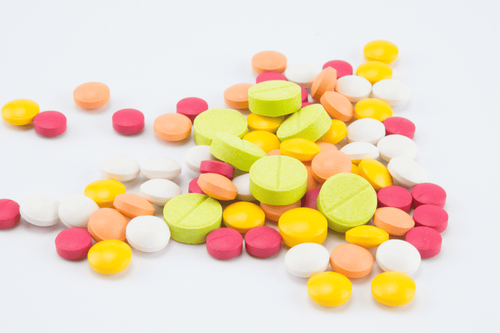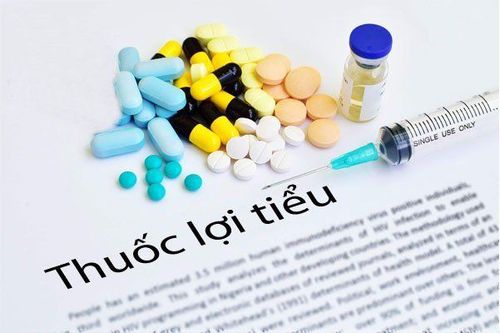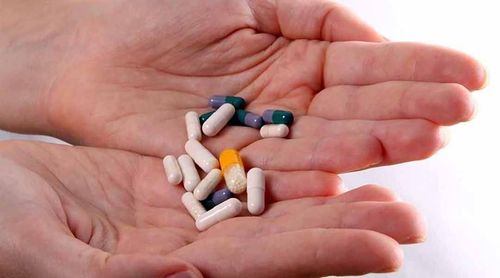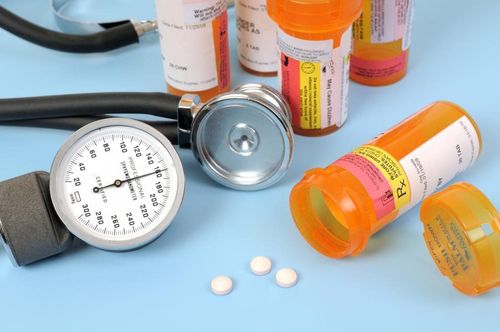This is an automatically translated article.
Angioten is an antihypertensive drug, manufactured and distributed by Kalbe Pharma Company, Indonesia. Let's learn about the uses of Angioten through the article below.
1. What is Angioten?
Drug group: Cardiovascular drugs
Dosage form: Film-coated tablets-50mg
Packing: Box of 3 blisters x 10 tablets
Ingredients:
Active ingredient: Losartan potassium 50mg. Excipients: Povidone, starch, lactose, talc, magnesium stearate, methylene chloride, ethyl cellulose, hypromellose, titanium dioxide, diethyl phthalate, Polysorbate 80.
2. Uses of Angiotensin
Treatment of mild to moderate hypertension, alone or in combination with other antihypertensive agents.
3. Dosage - How to take Angioten
For patients with essential hypertension: the starting and maintenance dose is 50 mg Losartan once daily. Some patients may have to take up to 100mg of Losartan daily to respond. For patients with impaired hepatic function or volume depletion or those at risk of hypotension, a lower dose of 25 mg Losartan per day should be used. No adjustment of the starting dose is required for elderly patients or patients with impaired renal function, including those on hemodialysis. Losartan and its metabolite are not removed by dialysis. Angioten can be taken with or without meals. Angioten may be used concurrently with other antihypertensive preparations.
4. Contraindications
Do not use Angioten in patients with a history of allergy to Losartan or any of its ingredients.
5. Be careful when using Angioten
Systemic hypotension may occur in patients with intravascular volume depletion, therefore losartan should be initiated at a low dose. For patients with impaired renal function and elderly patients, blood potassium levels should be regularly checked. Patients with impaired hepatic function: serum concentrations of losartan and its metabolites may be increased; therefore, dosage adjustment of Angioten may be required in these patients. Use in pregnant women: Angioten should not be used in pregnant women because it can cause medical conditions for the fetus and cause death. Use in Lactation: It is not known whether losartan is excreted in human milk. A decision should be made whether to discontinue nursing or to discontinue Angioten, based on the importance of the drug to the mother. Use in Children: The safety and effectiveness of Losartan in children have not been established.
6. Drug interactions
Thiazide diuretics: If Losartan is used concomitantly with thiazide diuretics, the hypotensive effect will be increased. Do not use Angioten together with potassium-sparing diuretics.
7. Angiotensin side effects
Hypotension, orthostatic hypotension, chest pain, grade II A-V block, sinus bradycardia, tachycardia, facial edema, flushing. Insomnia, dizziness, anxiety, ataxia, confusion, depression, migraine, headache, sleep disturbance, fever, dizziness. Increased/decreased blood K, Gout disease. Diarrhea, indigestion, loss of appetite, constipation, flatulence, vomiting, loss of taste, gastritis, intestinal spasms. Lower hemoglobin and hematocrit. Leukopenia, agranulocytosis, thrombocytopenia, aplastic anemia, hemolytic anemia. Back pain, leg pain, myalgia, paresthesia, tremor, bone pain, muscle weakness, joint edema, fibromyalgia. Hyperuricemia/hypouricemia (high dose), urinary tract infection, slight increase in creatinine/urea. Cough, nasal congestion, sinusitis, shortness of breath, bronchitis, nosebleeds, rhinitis, airway congestion, throat discomfort. Alopecia, dermatitis, dry skin, erythema, photosensitivity, pruritus, urticaria, bruising, rash. Impotence, decreased sex drive, polyuria, nocturia, renal failure, interstitial nephritis. Slight increase in liver function test/bilirubin, hepatitis, intrahepatic cholestatic jaundice, pancreatitis. Blurred vision, conjunctivitis, decreased vision, burning and stinging eyes. Tinnitus. Sweating. Hyperglycemia, hyperlipidemia (high dose). Hypomagnesaemia, hypercalcaemia, hypochloremic alkalosis, hypophosphataemia Special note:
Use caution in patients with intravascular volume depletion, Liver failure, renal artery stenosis.
8. Overdose
A clear lethality was observed when oral doses of 1000 mg/kg and 200 mg/kg were administered to mice and rats, approximately 44 and 170 times higher, respectively, than the maximum recommended human dose on a mg/m2 basis. There are limited data on losartan overdose in humans. The most common manifestations of overdose are hypotension and tachycardia; Bradycardia may occur due to parasympathetic nerve stimulation. If hypotension occurs, supportive treatment should be instituted. Neither Losartan nor its metabolites are removed by dialysis. Storage:
Store at room temperature, below 30°C.
Please dial HOTLINE for more information or register for an appointment HERE. Download MyVinmec app to make appointments faster and to manage your bookings easily.













